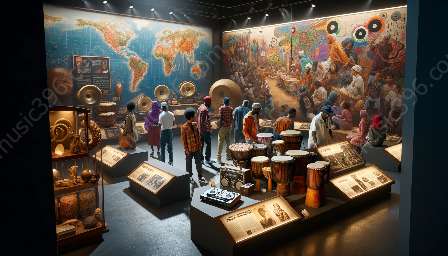From its humble beginnings in New York City's South Bronx to its global dominance today, hip-hop has evolved in many ways. One of the most significant aspects of this evolution is the development of hip-hop production techniques. These techniques have played a crucial role in shaping the sound and feel of urban & hip-hop music.
The Early Days of Hip-Hop Production
The roots of hip-hop production can be traced back to the early days of the genre, when DJs would manipulate vinyl records to create new sounds and rhythms. This art form, known as turntablism, was a fundamental part of hip-hop's inception and laid the groundwork for the production techniques that would follow.
Sampling and Drum Machines
One of the most significant advancements in hip-hop production was the widespread use of sampling. Producers would slice and rearrange snippets of existing songs to create entirely new compositions. This technique allowed them to harness the creative power of music history and gave birth to an entirely new approach to music-making.
Additionally, the introduction of drum machines revolutionized hip-hop production. These devices allowed producers to program and manipulate drum patterns with unprecedented precision, giving birth to the iconic beats that define the genre.
The Rise of Digital Production
As hip-hop continued to grow in popularity, so too did the technology behind its production. The advent of digital audio workstations (DAWs) and software-based production tools opened up a new world of creative possibilities for hip-hop producers. They could now manipulate sounds in ways that were previously unimaginable, leading to ever more innovative and complex compositions.
Modern Innovations and Trends
In the modern era, hip-hop production techniques continue to evolve at a rapid pace. Producers now have access to an unprecedented array of tools and technologies, allowing them to push the boundaries of what is possible.
One of the most significant trends in hip-hop production is the fusion of electronic and organic elements. Producers are blending traditional instrumentation with electronic sounds to create rich, multi-layered compositions that defy categorization.
- Furthermore, the rise of streaming platforms and social media has transformed the way hip-hop music is distributed and consumed. Producers are now creating beats with an eye towards virality, crafting sounds that are tailor-made for the digital age.
- Collaboration has also become a hallmark of contemporary hip-hop production. Producers are working closely with artists and songwriters to create cohesive, immersive sonic experiences that push the boundaries of the genre.
The Impact on Urban & Hip-Hop Music
The evolution of hip-hop production techniques has had a profound impact on the history of urban & hip-hop music. It has given rise to a diverse array of sounds and styles, from the gritty boom-bap of the 90s to the polished, genre-bending productions of today.
Moreover, hip-hop production techniques have played a crucial role in shaping the cultural landscape of urban & hip-hop music, allowing artists to express themselves in new and exciting ways while reaching a global audience.
In conclusion, the evolution of hip-hop production techniques has been a driving force in the history of urban & hip-hop music. From the early days of turntablism to the cutting-edge technologies of today, these techniques have continuously reshaped the sound and feel of the genre, ensuring that hip-hop remains at the forefront of musical innovation.




























